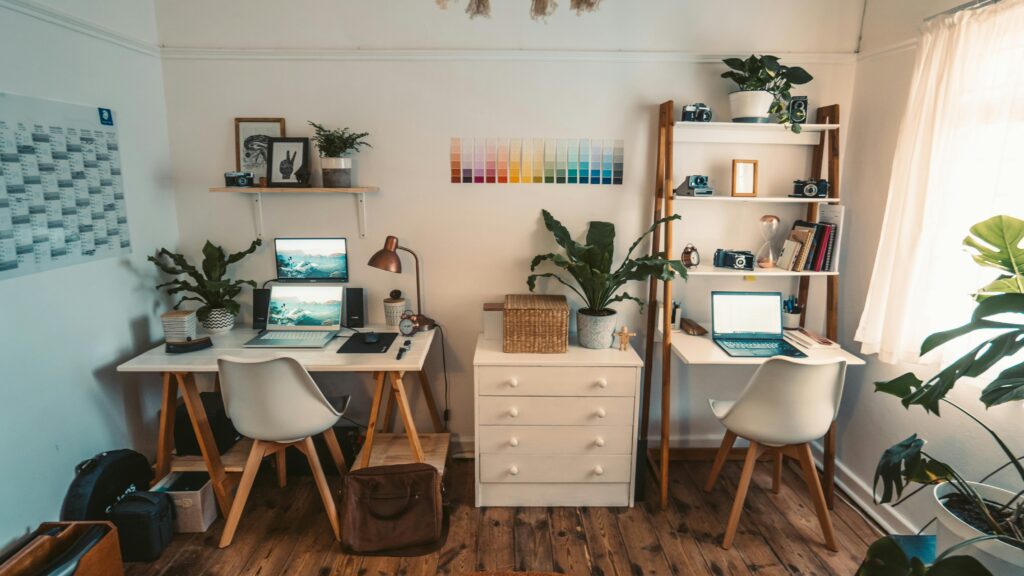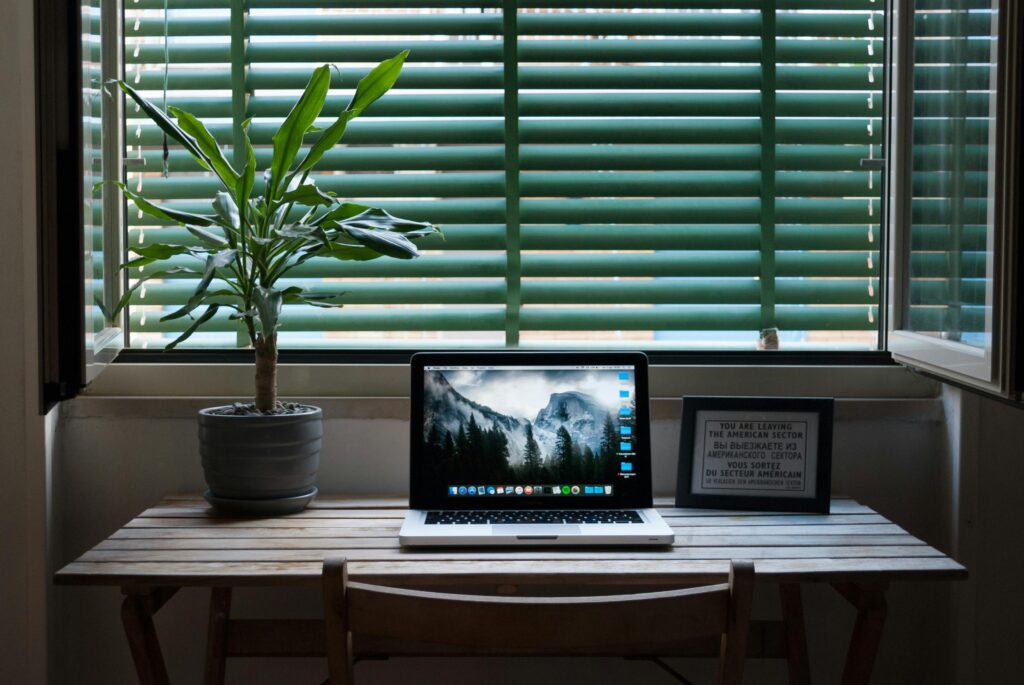Imagine coming home after a long day, stepping down into your basement, and entering a workspace that’s both inspiring and efficient, a personalized home office designed to maximize your productivity. It sounds ideal, right? Yet, many people overlook their basements when thinking about creating a productive work environment. Transforming your basement into a functional, inviting home office isn’t just a dream; it’s completely achievable with the right remodeling approach.
In this article, we will explore essential home office remodeling tips that cater specifically to adapting your basement space for productive work. From lighting solutions that keep you energized, to soundproofing tricks that minimize distractions, and smart furniture arrangements that enhance focus, these strategies will help you create a basement workspace where productivity doesn’t just happen, it thrives. Whether you’re a remote worker, freelancer, or simply need a dedicated spot to get things done, learning how to remodel your basement for a home office can transform the way you work daily.
By the end of this article, you’ll understand key design principles and practical remodel steps to convert your basement into a home office that enhances creativity, concentration, and overall efficiency. Say goodbye to wasted hours and hello to a workspace that truly works for you.
Table of Contents
ToggleKey Takeaways
- Maximize Underutilized Space: Converting your basement into a home office unlocks valuable square footage without the need for an addition.
- Assess and Plan First: Measure, map out wiring, lighting, and HVAC needs before starting to ensure a smooth remodel.
- Layer Your Lighting: Combine bright overhead LEDs with task lamps and ambient fixtures to combat typical basement dimness.
- Prioritize Ergonomics: Invest in an adjustable desk and supportive chair to maintain comfort and posture during long work sessions.
- Control Climate and Air Quality: Install proper insulation, dehumidifiers, and air purifiers to create a healthy, distraction-free environment.
- Zone for Function: Designate separate areas for focused work, storage, and relaxation to help your brain switch modes easily.
- Optimize Acoustics: Use sound-absorbing panels, rugs, or white-noise machines to minimize echoes and external noise.
- Declutter with Smart Storage: Incorporate built-in shelving, cabinets, and cable management to keep the workspace tidy and organized.
- Personalize for Motivation: Add plants, artwork, or color accents that inspire creativity and make the space uniquely yours.
- Plan for Technology Needs: Ensure reliable high-speed internet, ample outlets, and surge protection to support all your devices.
Why Home Office in Your Basement Remodeling Tips for Productivity Are More Important Than You Think
Transforming a basement into a home office is no longer just a trend, it’s become an essential strategy for millions seeking a dedicated, productive workspace within their homes. Understanding home office in your basement remodeling tips for productivity is crucial because more people than ever are shifting to remote work or hybrid schedules. According to a 2023 report by Gallup, 45% of full-time American employees worked from home either all or part of the week, and this number continues to grow. Consequently, having a functional, comfortable, and efficient workspace is not just a luxury but a necessity.
The importance of home office in your basement remodeling tips for productivity lies in the unique challenges and opportunities basements present. Unlike typical rooms, basements often involve dealing with limited natural light, humidity, and unconventional layouts. Without the proper planning and remodeling insights, these factors can hinder rather than help work productivity.
One of the critical reasons to pay attention to home office in your basement remodeling tips for productivity is the impact environment has on focus and creativity. Studies show that workers in well-designed home offices experience a 20% increase in productivity and report better mental well-being. This is where remodeling tips designed specifically for basements come into play. From choosing the right lighting to installing adequate insulation, each decision directly influences how effectively you can work.
Take, for instance, the success story of Jessica, a graphic designer from Chicago. When her company shifted to permanent remote work, she decided to convert her unfinished basement into an inspiring workspace. By following tailored home office in your basement remodeling tips for productivity, Jessica implemented layered lighting solutions, added moisture barriers, and created a color scheme that boosts focus. Within three months, she noticed a significant improvement in her work output and creativity, enabling her to land higher-profile clients. Jessica’s experience shows that the right remodeling tips don’t just improve space, they transform professional lives.
Understanding these benefits underscores why investing time and effort into learning about home office in your basement remodeling tips for productivity is key for anyone looking to maximize their remote work potential. Whether you’re battling damp walls or awkward layouts, the right guidance can turn your basement into a powerhouse of productivity.
How to Apply Home Office in Your Basement Remodeling Tips for Productivity Step by Step
Transforming your basement into a productive home office involves more than just moving your desk downstairs. To create a workspace that truly enhances your efficiency and comfort, follow these carefully curated steps for home office in your basement remodeling tips for productivity.
1. Assess Your Basement Space and Needs
Before any remodeling begins, evaluate the basement area you plan to convert. Consider the following:
– Size and layout: Measure the space to understand what kind of furniture and equipment can fit comfortably.
– Lighting: Basements often lack natural light. Identify existing light sources and plan for additional lighting.
– Electrical outlets and wiring: Check the availability of outlets, internet connectivity, and plan for necessary upgrades.
– Ventilation and temperature control: Basements can be damp or chilly; consider heating, cooling, and air quality solutions.
This initial assessment lays the foundation for all subsequent steps, ensuring your home office in your basement remodeling tips for productivity are tailored to your unique space.
2. Plan an Ergonomic and Functional Layout
The layout impacts how efficiently you work. Incorporate these home office in your basement remodeling tips for productivity:
– Choose a proper desk and chair: Opt for adjustable ergonomic furniture that supports good posture.
– Designate zones: If space allows, separate areas for focused work, storage, and breaks.
– Arrange for natural movement: Keep frequently used items within arm’s reach, and allow enough room to move without obstacles.
– Optimize lighting: Combine ambient, task, and accent lighting to reduce eye strain.
3. Optimize Lighting and Ambiance
Lighting directly affects productivity, mood, and comfort. Since basements lack sufficient natural light, apply these tips:
– Use bright, warm LED lights that mimic daylight to create an inviting atmosphere.
– Install adjustable desk lamps with dimming features.
– Add reflective surfaces or light-colored walls to enhance the distribution of light.
– Consider circadian lighting systems to align your workspace with your natural body rhythms.
Image idea: A well-lit basement office showing layered lighting with LED ceiling lights and a task lamp on the desk.
4. Enhance Air Quality and Temperature Control
Poor air quality and temperature fluctuations reduce productivity. Implement these home office in your basement remodeling tips for productivity:
– Install a dehumidifier to reduce dampness.
– Incorporate air purifiers to eliminate allergens and odors.
– Use portable heaters or install baseboard heating for warmth in cold months.
– Ensure proper ventilation with vents or window fans whenever possible.
5. Choose Productivity-Boosting Colors and Décor
Color psychology plays a vital role in motivation. For your basement office:
– Select light, calming colors like soft blues or greens to reduce stress.
– Incorporate motivational artwork or inspiring quotes.
– Add plants to improve air quality and create a refreshing environment.
– Minimize clutter, use built-in shelves or cabinets to keep the space organized.
6. Set Up Technology and Connectivity
Reliable technology is the cornerstone of a productive home office. Follow these tips:
– Ensure high-speed internet access.
– Install surge protectors and cable management systems for safety and tidiness.
– Choose noise-canceling headphones if the basement echoes.
– Set up multiple monitors if needed to enhance multitasking.
7. Personalize the Space for Motivation
Finally, customize your new basement office to inspire productivity:
– Add personal touches: family photos, favorite books, or memorabilia.
– Create a routine: designate “work hours,” and design the space to support focus and creativity.
– Invest in comfort: cozy rugs or cushions can create a welcoming vibe.
By following this comprehensive step-by-step guide on home office in your basement remodeling tips for productivity, you can create a basement workspace that not only fits your needs but actively promotes your professional success. Remember, your basement office is more than a room, it’s the heart of your productivity.

Tips for a Productive Home Office in Your Basement Remodeling:
✅ Optimize Lighting: Use a combination of natural light and adjustable LED lighting to reduce eye strain and boost focus.
✅ Invest in Ergonomic Furniture: Choose a comfortable chair and an adjustable desk to maintain good posture and prevent fatigue.
✅ Insulate Properly: Ensure your basement is well-insulated to maintain a comfortable temperature year-round, avoiding distractions caused by cold or heat.
✅ Control Noise Levels: Install soundproofing materials or use white noise machines to minimize disruptions and create a focused work environment.
✅ Designate a Separate Work Zone: Clearly define your office space to help mentally separate work from leisure, enhancing productivity.
✅ Incorporate Storage Solutions: Use shelves, cabinets, and organizers to keep your workspace clutter-free and efficient.
✅ Add Personal Touches: Decorate with inspiring artwork or plants to create a motivating and pleasant atmosphere.
✅ Set Up Reliable Tech Infrastructure: Ensure strong Wi-Fi connectivity and proper electrical outlets for all your devices without interruptions.
💡 Extra tip: Use a timer or productivity app to structure your work sessions and breaks, boosting efficiency throughout the day.
Key Concepts
The journey of transforming a basement into a productive home office is much like cultivating a dormant garden beneath the surface of your home. This hidden space, often dark and overlooked, holds untapped potential, waiting for thoughtful remodeling to awaken its capabilities. To truly grasp the essence of “Home Office in Your Basement Remodeling Tips for Productivity,” it’s essential to dive into the foundational concepts that shape both the physical space and the mental atmosphere conducive to work.
The Psychology of Space and Productivity
One of the most profound ideas underlying basement office remodeling is the psychology of space. Our environment profoundly influences our mindset, concentration, and creativity. A basement, by default, can evoke feelings of isolation or confinement, resembling a cave , secluded but potentially oppressive. However, with the right design principles, this can be reversed. Just as a sculptor chisels away stone to reveal a statue, remodeling can carve out an inspiring workspace that fosters motivation rather than stagnation.
The crucial concept here is that light, color, and openness don’t just brighten a room; they uplift moods and spark productivity. Natural light, or its artificial counterparts engineered to mimic it, serve as a metaphorical sunrise, gently nudging the brain into alertness and focus. Meanwhile, the choice of colors and textures can simulate a breath of fresh air , cooler hues calm the mind like a serene lake, while warmer tones energize like a morning coffee.
Zoning: The Architecture of Mental Clarity
Another cornerstone in basement office design is zoning , the art of organizing space to support specific mental modes. Imagine the basement as a theatrical stage. Each “zone” is a setting where distinct scenes of work play out: deep focus, brainstorming, breaks, or administrative tasks. Separation, whether physical or symbolic, keeps distractions at bay and prompts psychological shifts necessary for productivity.
Zoning can be compared to the rhythms of a well-composed musical piece where each movement has its purpose. When silent, clutter-free corners are designated for concentrated work, and vibrant, open areas are reserved for creative thinking or breaks, the mind learns to associate places with mental states. This implicit mapping enhances efficiency in switching between tasks without losing momentum.
Ergonomics Embedded in Design
Ergonomics is more than just furniture choices; it is the science of harmonizing human anatomy with the environment to sustain well-being and productivity. The basement office, often constrained by height, layout, or structural quirks, requires ergonomic solutions to transform obstacles into opportunities rather than hindrances.
Think of ergonomics as a tailor crafting a bespoke suit versus buying off-the-rack. Customized desk heights, chair supports, and monitor placements adjust not only physical comfort but align with habitual movements, preventing fatigue and fostering prolonged focus. This alignment between body and environment is like a dancer syncing rhythm with music , seamless and effortless, enabling a flow state where work feels natural.
Acoustics: The Silent Partner of Concentration
Sound shapes our attention like air shapes a sail. In the enclosed confines of a basement, acoustics become a vital but often underestimated element. Without proper consideration, echoes or street noise could disrupt the concentration akin to a sudden gust disturbing a calm sea.
Acoustic remodeling entails a nuanced balance between absorption and reflection of sound waves to create an environment where silence is not emptiness but a carefully curated soundscape. Soundproofing materials act like thick forest foliage, trapping distractions, while strategically placed soft furnishings scatter residual noise, crafting an auditory cocoon. This unseen layer of design ensures that productivity flows undisturbed by sonic chaos.
Ventilation and Air Quality: The Invisible Fuel
Perhaps the most intangible yet crucial concept is the quality of the air itself. A basement’s natural inclination toward humidity and stale air challenges the remodeling process but also offers an opportunity to rethink how breathing space fuels thinking space.
Ventilation is metaphorically the heartbeat of an office , steady, unnoticed when functioning well, but essential for life. Fresh air circulation removes pollutants, controls humidity, and maintains oxygen levels, which directly correlate with cognitive performance. In this way, the basement office transforms from a hidden dungeon into a vital, breathing part of the home ecosystem, invigorated by a stream of crisp, clean air.
In sum, “Home Office in Your Basement Remodeling Tips for Productivity” is not merely about construction or decoration, it is an intricate dance involving light, space, sound, body, and air. Each concept interlaces with the others, creating an environment that elevates the basement from underground obscurity to a shining beacon of productivity and creativity. Understanding these concepts equips anyone with the insight to approach basement remodeling not as a chore, but as an art form , a story of transformation beneath the surface.
Frequently Asked Questions about Home Office in Your Basement Remodeling Tips for Productivity
❓ What are some key tips for remodeling a basement into a productive home office?
To create a productive home office in your basement, prioritize good lighting (both natural and artificial), soundproofing to minimize distractions, ergonomic furniture, and effective organization systems. Also, consider proper ventilation and temperature control to maintain comfort.
❓ How can I make a basement home office feel less isolating?
Incorporate bright colors, ample lighting, and decor that energizes you. Adding plants or artwork can bring life to the space. Position your desk near any available windows to capture natural light and occasionally connect with views outside.
❓ Is it necessary to address moisture issues before remodeling a basement office?
Absolutely. Moisture can cause mold and damage electronics or furniture, reducing productivity. Ensure your basement is dry by installing dehumidifiers, waterproofing walls, and fixing any leaks before starting your remodeling project.
❓ What are the best flooring options for a basement home office to maximize comfort and productivity?
Consider flooring materials that provide warmth and sound absorption, such as carpet tiles or cork flooring. These help minimize noise and make the space more comfortable for long working hours compared to cold, hard surfaces like concrete.
❓ How can I improve internet connectivity in a basement home office?
Use Wi-Fi extenders or mesh network systems to strengthen signal reach. Running an Ethernet cable directly to your workstation is also a highly reliable option for maintaining fast and stable internet essential for productivity.


